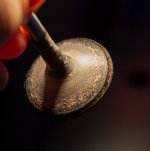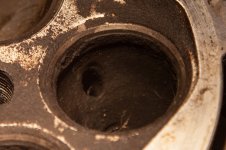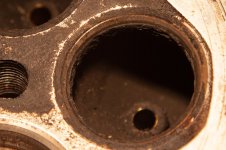I've had my engine apart for the past year and a half, and I finally have the next few months to try to get everything done. I've had a possible head gasket leak, so I ordered a bunch of new parts, gaskets included, and am currently working on cleaning the valves.
I soaked my first (exhaust) valve in Varsol for a while, then placed electrical tape over the stem and threw it in a drill. I used a medium Scotch-Brite pad while rotating in the drill to attempt to get the carbon deposits off. Here is what I have so far:
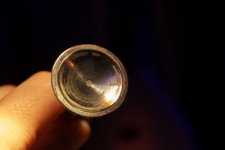
Since this is my first time doing this, I am not sure how far to take it. Should I continue with the Scotch-Brite pad and attempt to clean these further?
If I reuse these valves (as opposed to buying new ones), I am going to lap them and test for air leaks. Looking at the seating face, do these look like signs of pitting? And, if so, will lapping rectify this?
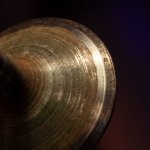
I soaked my first (exhaust) valve in Varsol for a while, then placed electrical tape over the stem and threw it in a drill. I used a medium Scotch-Brite pad while rotating in the drill to attempt to get the carbon deposits off. Here is what I have so far:

Since this is my first time doing this, I am not sure how far to take it. Should I continue with the Scotch-Brite pad and attempt to clean these further?
If I reuse these valves (as opposed to buying new ones), I am going to lap them and test for air leaks. Looking at the seating face, do these look like signs of pitting? And, if so, will lapping rectify this?


